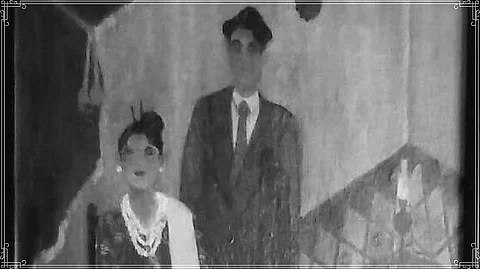

As Goa's iconic Mando—a graceful blend of song, dance, and poetic storytelling—continues to charm audiences, historians and cultural researchers are shedding light on the traditional attire worn by its performers during the 19th century. These costumes, rich in symbolism and historical influence, not only reflect the region’s sartorial evolution but also the deep-rooted customs that governed life, festivity, and mourning.
Goan men participating in Mando performances in the 19th century gradually transitioned from traditional attire to European-style suits, influenced by colonial presence and changing public norms. The earlier outfit included the ‘Cabaia’, a long tunic with wide sleeves introduced during the Muslim era, and the ‘Kaxtti’, a kerchief tied around the waist to cover the genitals.
As western trends took hold, performers adopted tailored suits—either tailed or untailed coats—often paired with a collar bow. This shift, while reluctant at first, marked a blend of East and West in public presentation, particularly during Mando performances.
The ‘Torhop-Baz’: Women’s Attire With Deep Cultural Roots
Women, on the other hand, wore the ‘Torhop-baz’—a three-piece traditional outfit comprising the ‘Torhop’ (a wraparound skirt), ‘baz’ (a fitted blouse), and a ‘tuvalo’ (shawl draped over the left shoulder). This outfit was paired with ornate velvet or silk shoes embroidered in gold or silver thread, known as ‘Chinelo’.
The Torhop, roughly 90 by 150 cm in size with distinct horizontal and vertical borders, was a stylized evolution of the Indian loin cloth. It existed in two primary forms—ceremonial and mourning. Mourning versions were in black and white, with red or black borders denoting the relationship to the deceased. Widows, after the first year of mourning, would wear black Torhops with blue borders for the rest of their lives, while married women wore vibrant red-bordered skirts with no black in their attire.
Jewelry completed the ensemble, carrying both aesthetic and symbolic value. Some notable pieces included:
Pedro Vitorine or Pedro Verde: Malachite lantern-style earrings
Cordão: Multi-strand gold-beaded necklace
Chamfim: Intricate gold floral hair ornaments
Fattor Pedra Verde: A striking green stone necklace
Bangles and other gold adornments: Symbolizing marital status and regional pride
The overall presentation was not just an expression of elegance but a coded language of community, status, and emotion—especially evident in the rich mourning customs and celebratory attire.
As Goa continues to celebrate its vibrant traditions, the revival and study of these costumes remind us that Mando is not just a cultural performance—it's a reflection of the state’s layered social fabric, preserved in music, movement, and meaningful attire.